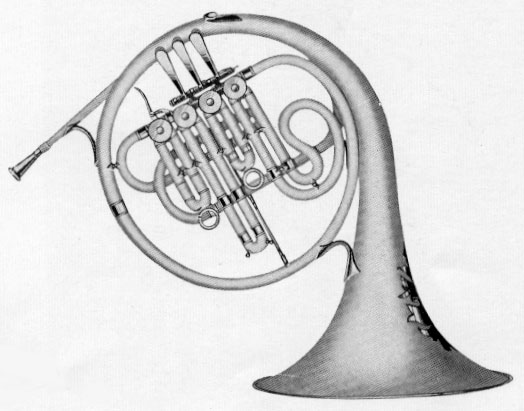Conn 10D Single Bb Horn

Date: 1924. (Drawing)
The 10D is a Low Pitch instrument; there was no 11D High Pitch version. The model list description reads: "4 Rotary Valves with "A" Natural Valve With or Without Stop Valve". The stop valve was used to correct the tuning of the instrument when the hand was inserted into the bell. It also gives an A horn in this Bb instrument. Which makes me wonder about the phrase "4 Rotary Valves with "A" Natural Valve". Yes, it had 4 valves (not counting the stop valve). The 4th valve is slightly longer than the 2nd valve crook, which would cause the instrument to be lowered by slightly more than half a tone? That would be approximately "A". Is this what would qualify as an "F-attachment" in a trombone"? Am I showing my lack of specific French horn knowledge here by this question?
What Conn said in 1924:
[Here] is illustrated the 10D, which is the newest of the Conn line, built in Bb only. This new model is meeting with
unusual success, and has rapidly become popular with both orchestra and band musicians. It is true in tune and since it is built
by the expansion process the tubing is shaped with mechanical accuracy, so that it does not present the difficulties
to the performer which is generally expected with horns of this type.
Attention is called to the new tuning slide illustrated and described [on the 1924 6D "Schmidt" model] page. This can be
supplied for the 10D if it is ordered at the same time as the horn for which it is intended, at an extra charge. This tuning
slide enable the performer to correct the tune of his instrument when using the hand in the bell, and also gives an A Horn in
the Bb 10D.
What Conn said in 1938:
Because the Bb horn is shorter than the F horn and consequently easier to blow, many players who have strenuous engagements
choose the Bb horn and transpose. Some symphony players will not use anything but the Bb horn. First and third chair players
particularly prefer the Bb horn because the high notes written for them come easier on the higher pitched instrument. This
new model is the result of long and intensive experiment, particularly with the mouthpipe, bell and first bell branch. The
tubing also has been carefully designed to eliminate all sharp bends and ugly shapes. Note beauty and symmetry of the Conn.
Every part has been adopted after many tests and approval by America's leading horn authorities. This model comes with stop
valve, which is necessary for playing notes in tune that have become sharpened by hand stopping. On the F horn this stop valve
is optional, for these notes can be transposed and played in tune by using the second valve; but good horn players agree that
stop valve is necessary on Bb horn, because tubing required for bringing sharpened notes into tune is longer than second valve
tubing.